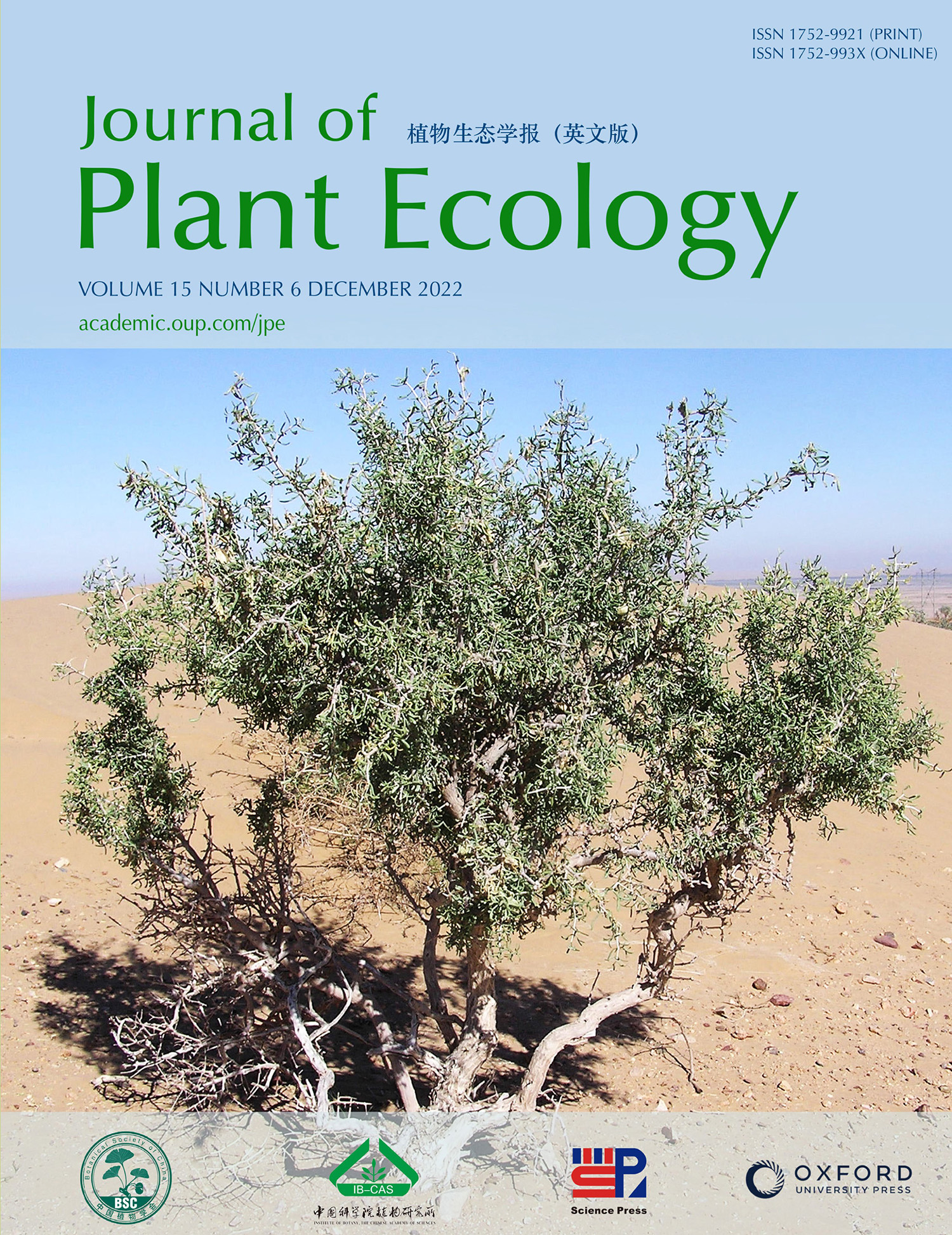Current Issue
-
 Volume 15 Issue 6
Volume 15 Issue 6
A plant individual of Zygophyllum xanthoxylon in the Ulan buh Desert, Inner Mongolia, China. Zygophyllum xanthoxylon is widely distributed in arid and semi-arid regions of Africa, the Mediterranean Basin, central Asia and Australia. In the arid region of northwest China, the species occurs in sandy gravel dunes, hilly slopes, and pediments in desert and semi-desert areas. This species is heterocarpous — single individuals can have as many as five distinct winged seed morphologies, making it ideal for studying the effects of seed morphology and orientation on seed dispersal by wind. Photo taken by Zhiming Xin. See Zhu et al. in this issue.
IF: 3.9
CiteScore: 5.7
CiteScore: 5.7
Editors-in-Chief
Yuanhe Yang
Bernhard Schmid
Yuanhe Yang
Bernhard Schmid
CN 10-1172/Q
ISSN 1752-9921(print)
ISSN 1752-993X(online)
ISSN 1752-9921(print)
ISSN 1752-993X(online)







